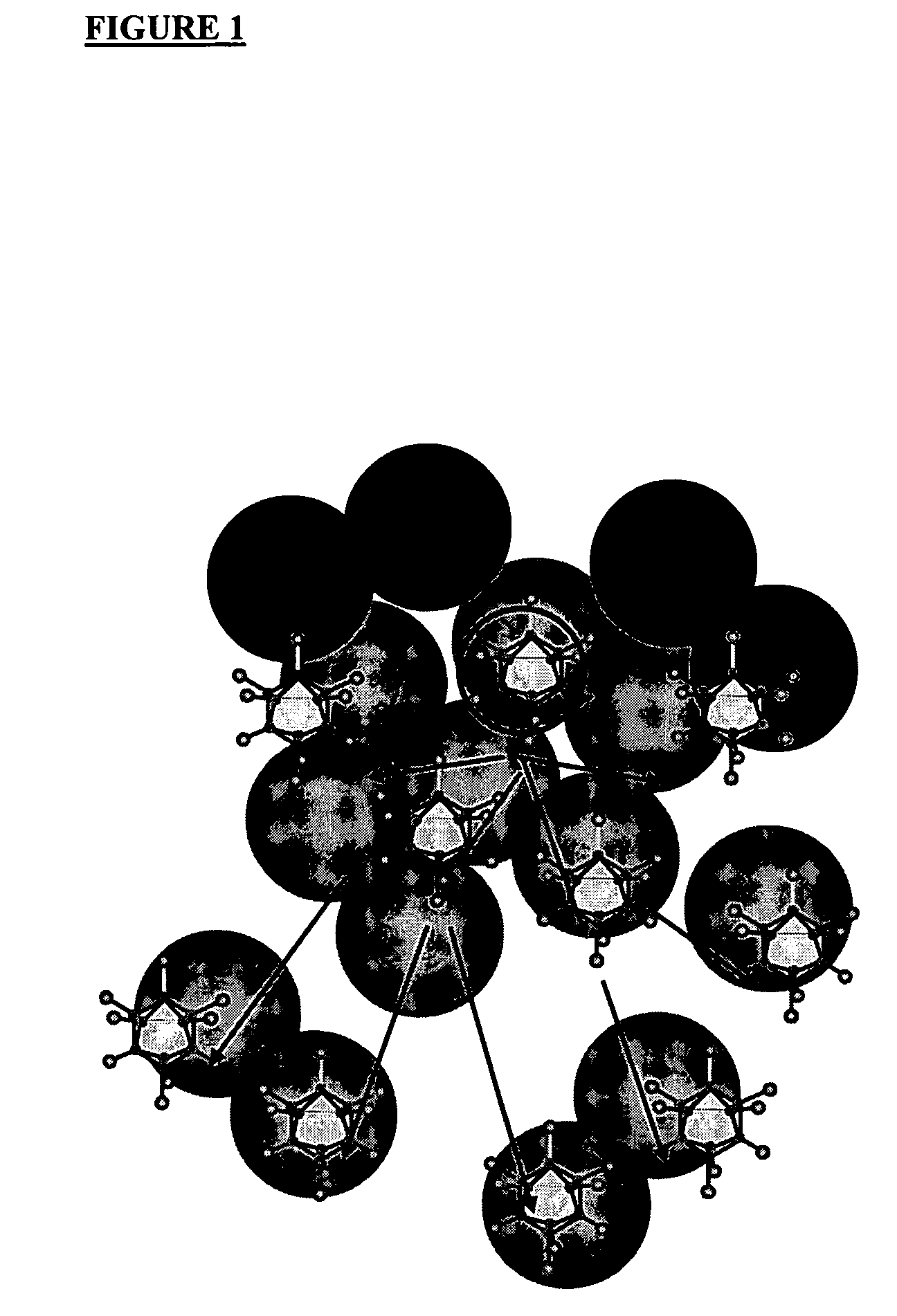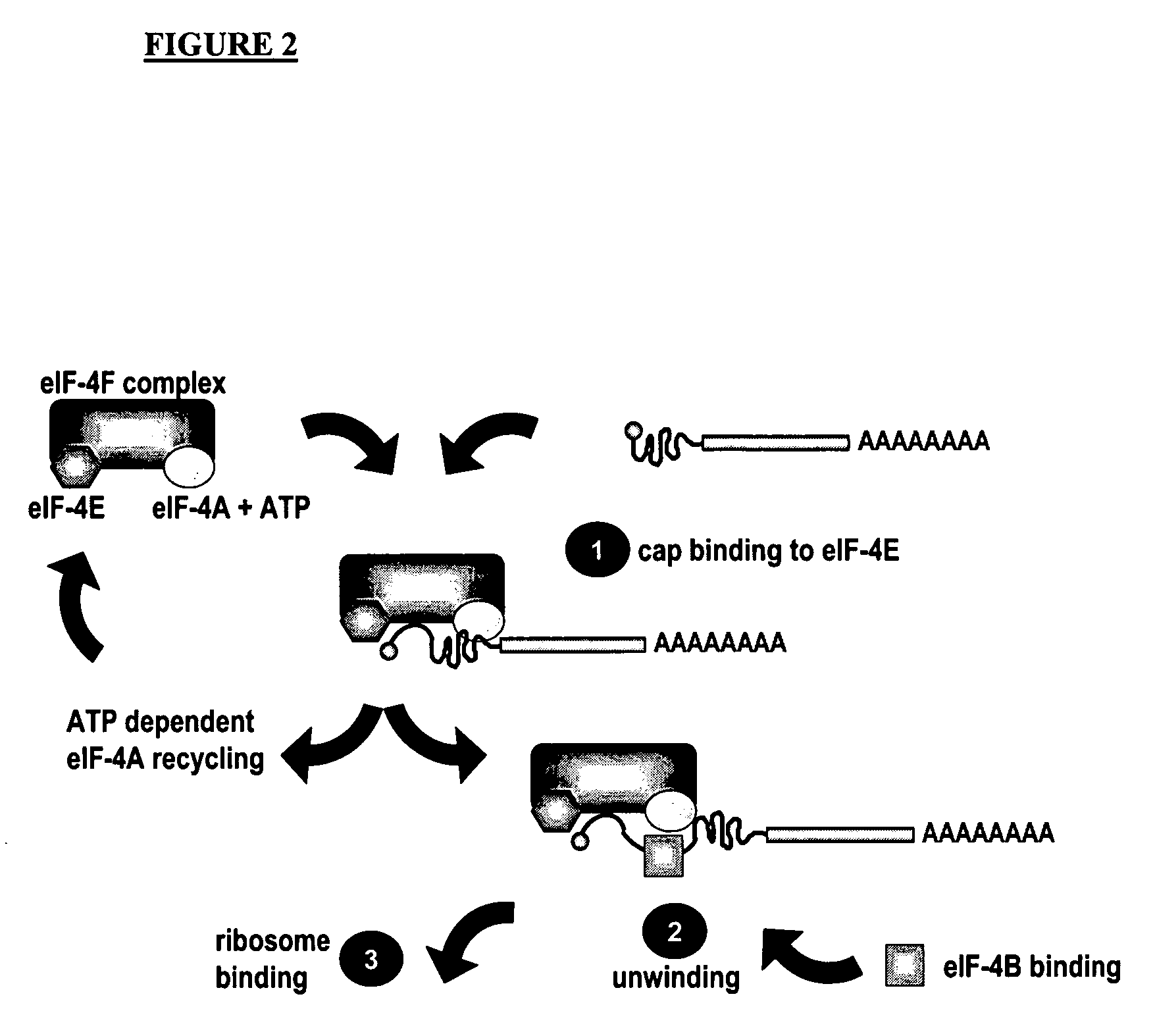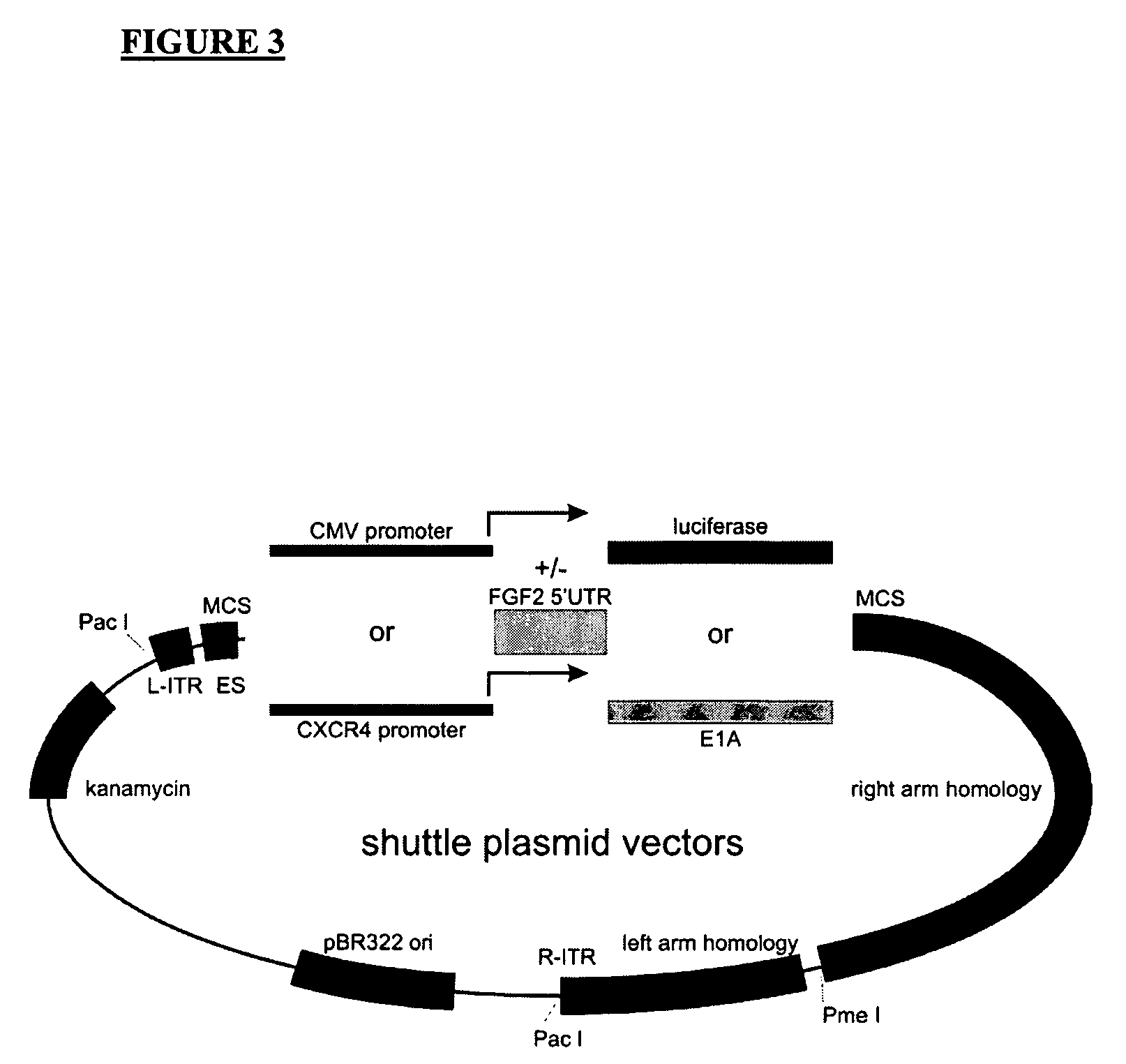Conditionally replicating viruses and methods for cancer virotherapy
a virus and cancer technology, applied in the field of conditionally replicating viruses and methods for cancer virotherapy, can solve the problems of not maintaining the specific gene expression pattern of the primary tumor, the difficulty of reaching the metastases, and the inability to successfully address the major problem of how to target metastases, etc., to achieve efficient protein translation, efficient protein translation, and reduced background activity of cancer-specific promoters in non-cancer cells
- Summary
- Abstract
- Description
- Claims
- Application Information
AI Technical Summary
Benefits of technology
Problems solved by technology
Method used
Image
Examples
Embodiment Construction
[0062] The practice of the present invention will employ, unless otherwise indicated, conventional methods of virology, microbiology, molecular biology and recombinant DNA techniques within the skill of the art. Such techniques are explained fully in the literature.
[0063] The present invention will now be described with reference to the accompanying drawings, in which preferred embodiments of the invention are shown. This invention may, however, be embodied in different forms and should not be construed as limited to the embodiments set forth herein. Rather, these embodiments are provided so that this disclosure will be thorough and complete, and will fully convey the scope of the invention to those skilled in the art.
[0064] Unless otherwise defined, all technical and scientific terms used herein have the same meaning as commonly understood by one of ordinary skill in the art to which this invention belongs. The terminology used in the description of the invention herein is for th...
PUM
| Property | Measurement | Unit |
|---|---|---|
| stability | aaaaa | aaaaa |
| composition | aaaaa | aaaaa |
| nucleic acid | aaaaa | aaaaa |
Abstract
Description
Claims
Application Information
 Login to View More
Login to View More - R&D
- Intellectual Property
- Life Sciences
- Materials
- Tech Scout
- Unparalleled Data Quality
- Higher Quality Content
- 60% Fewer Hallucinations
Browse by: Latest US Patents, China's latest patents, Technical Efficacy Thesaurus, Application Domain, Technology Topic, Popular Technical Reports.
© 2025 PatSnap. All rights reserved.Legal|Privacy policy|Modern Slavery Act Transparency Statement|Sitemap|About US| Contact US: help@patsnap.com



